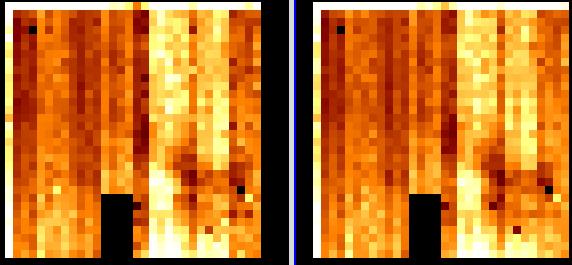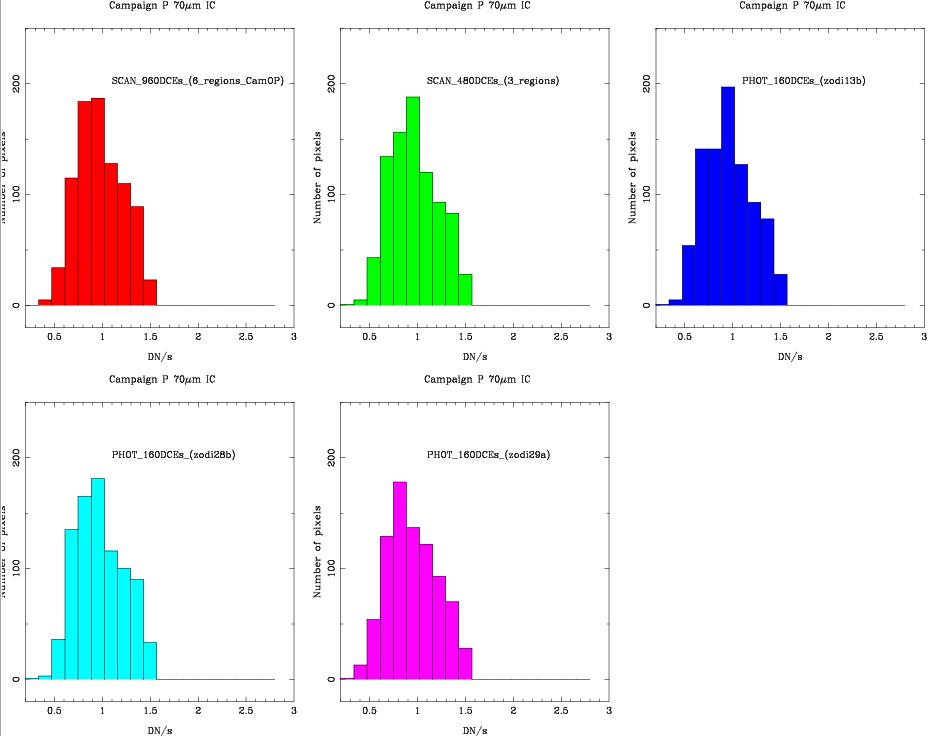
Figure1. Comparison of 70micron Illumination Corrections obtained in Campaign P (left) and Campaigns O+P (right). Both are displayed from z1=0. to z2=2.
Principal:
Deputy:
Analyst:
AORKEYS:
Last Updated:
We have observed 2 degrees (1 leg) in fast mode for three different regions of
the sky (zodi_13b, zodi_28b, and zodi29a). Note that two of
the 70micron regions were observed in MIPS-914 and MIPS-916.
Since these tasks are repeated a number of times during IOC, we will observe
different regions of the sky each time. The tasks will check for possible
variations of quality of IC or saturation. This task will also be useful for
screening regions of the sky to obtain ICs in SIRTF routine operations.
The reduction was performed with the DAT programs. We used mips_sloper with
sensitive cosmic ray detection (-q option)
turning off the electronic non-linearity correction, mips_caler (using
the 70micron me_70_darka_CamP_4nov2003.fits)
and mips_enhancer with the following options:
verbose = 0
scale = 1.
filename = ic70_scan
prefix = ic_scan70
nXTile = 1
nYTile = 1
dark = 0
flat = 0
illumination_correction = 1
NormalizeInput = 1
SigmaCut = 3.0
SigmaTolerance = 0.25
MaxIterations = 10
StackSTDEV = 0
OutlierMinPoints = 3
QuartileFactor = 10
OverlapTolerance = 0.5
diagonistics = 1
WriteGeometry = 0
WriteOutlier = 0
WriteTiles = 0
FluxMean = 0
FluxMedian = 1
OverWrite = 1
distortion = 0
UseBoostFrame = 1
reject = 1
Note that we rejected the first DCE after the stim flash (reject = 1 option) and normalized
the input images (NormalizeInput = 1 option).

Figure1.
Comparison of 70micron Illumination Corrections obtained in Campaign P (left) and Campaigns O+P (right).
Both are displayed from z1=0. to z2=2.

Figure2.
Histograms of the 70micron Illumination Corrections observed in Campaign P
obtained in different modes and different regions of the sky.

Figure3.
Examples of ratios of 70micron Illumination Corrections: up-left: Campaign O to Campaign P, up-rigth: scan zodi_13b to scan zodi_28b, bottom-left: scan zodi_13b to scan zodi_29a, bottom-right: scan zodi_28b to scan zodi_29a. All images are shown with z1=0 and z2=2.
We have also compared the ICs in Campaign O and P for the two regions in common:
zodi_13b and zodi_28b. The results are:
ratio ICs SCAN zodi_13b CamO/CamP: 0.9996 0.17 0.9834 0.9191 0.1813 0.2483 1.461
Side A alone: 0.9964 0.1432 0.9937 1.01 0.09084 0.587 1.461
Side B alone: 1.003 0.1927 0.9812 0.946 0.1877 0.2483 1.444
ratio ICs SCAN zodi28b CamO/CamP: 0.9879 0.1333 0.9725 0.9058 0.3908 0.4958 1.461
Side A alone: 0.9809 0.1072 0.9763 0.905 0.02296 0.6611 1.305
Side B alone: 0.9944 0.1539 0.9675 0.9615 0.4224 0.4958 1.461
Actually, the brightness of zodi_28b in Campaign O is closer to the brightness of
zodi_13b in Campaign P, but the figures are very similar to the ones given above:
ratio ICs SCAN (zodi_28b CamO)/(zodi_13b CamP): 1.002 0.1442 0.9866 0.9955 0.4479 0.4645 1.499
Side A alone: 1.002 0.1244 0.9961 0.9969 0.2116 0.6789 1.423
Side B alone: 1.002 0.1611 0.9819 0.9893 0.5365 0.4645 1.499
Conclusions
We have constructed 70micron ICs (wide field) obtained in PHOTOMETRY and SCAN modes using
three regions of the sky (zodi13b, zodi28b, zodi_29a). The
standard deviations of the 70micron ICs over the entire array are
approximately 25%, but this statistics includes the illumination pattern of
the 70micron array. If we remove the illumination pattern by ratioing two
SCAN ICs, we find that the rms is 9%-14%. The comparison of Campaigns O and
P provides approximately the same values (480DCEs each).
Output and Deliverable Products
70micron IC to be used to reduce data obtained in campaign P.
Actions Following Analysis